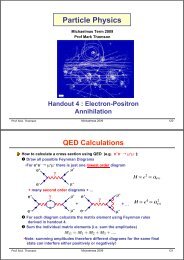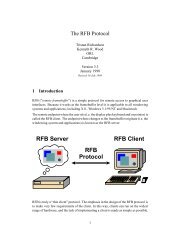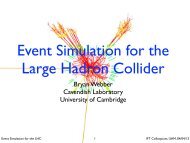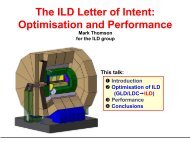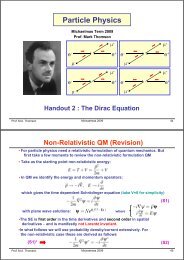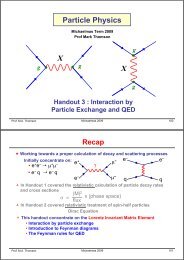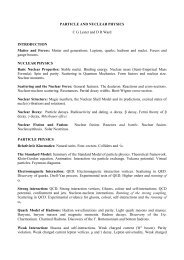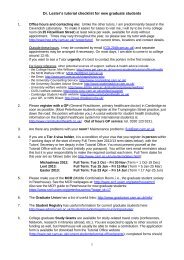SU(3) Ladder Operators
SU(3) Ladder Operators
SU(3) Ladder Operators
You also want an ePaper? Increase the reach of your titles
YUMPU automatically turns print PDFs into web optimized ePapers that Google loves.
• In general the symmetry operation may depend on more than one parameter<br />
For example for an infinitesimal 3D linear translation :<br />
• So far have only considered an infinitesimal transformation, however a finite<br />
transformation can be expressed as a series of infinitesimal transformations<br />
Example: Finite spatial translation in 1D: with<br />
i.e. obtain the expected Taylor expansion<br />
Prof. M.A. Thomson Michaelmas 2011 210<br />
Symmetries in Particle Physics : Isospin<br />
•The proton and neutron have very similar masses and the nuclear<br />
force is found to be approximately charge-independent, i.e.<br />
•To reflect this symmetry, Heisenberg (1932) proposed that if you could<br />
“switch off” the electric charge of the proton<br />
There would be no way to distinguish<br />
between a proton and neutron<br />
•Proposed that the neutron and proton should be considered as<br />
two states of a single entity; the nucleon<br />
Analogous to the spin-up/spin-down states of a spin-½ particle<br />
ISOSPIN<br />
Expect physics to be invariant under rotations in this space<br />
•The neutron and proton form an isospin doublet with total isospin I = ½ and<br />
third component I 3<br />
= ± ½<br />
Prof. M.A. Thomson Michaelmas 2011 211




